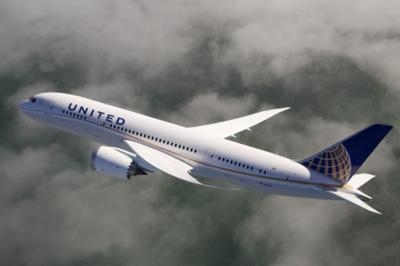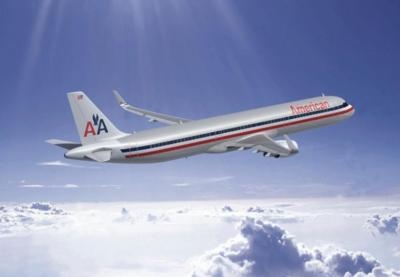Airlines Adding 110,000 More Seats Per Day To Accommodate Rise In Demand
Setting a new record-high for spring travel, Airlines for America (A4A), the industry trade organization for the leading U.S. airlines, expects 145 million passengers – nearly 2.4 million per day – to fly globally on U.S. airlines between March 1 and April 30, an increase of 4 percent over last spring’s 140 million passengers. Accordingly, airlines are adding 110,000 seats per day across their networks to accommodate the 89,000 additional daily passengers expected to fly on U.S. carriers during this period.

“There has never been a better time to fly, as evidenced by the record levels of traffic U.S. airlines saw in 2016 and will see again this spring,” said A4A Vice President and Chief Economist John Heimlich. “While historically low fares, reliable operations and several consecutive years of reinvestment in the product are the primary factors underlying this growth, a boost in U.S. employment and personal incomes and the highest-ever level of household net worth are also fueling the strong demand for air travel.
“With spring weather on the horizon, consumers are eager to travel and airlines are more than ready to accommodate the growth expected this year with additional seats, new aircraft and increases in staffing,” continued Heimlich.
In addition to offering lower airfares and further driving competition in the industry, airlines are adding service through nonstop routes and growing the supply of scheduled seats at U.S. airports of all sizes.
U.S. and foreign airlines in 2016 added 198 new routes and discontinued 161 routes, equating to a net growth of 37 nonstop routes year-over-year serving consumers traveling to and from U.S. airports. Airlines in 2017 have already added 151 new routes, while discontinuing 134 routes for a net growth of 17 routes. Over the past two years, fliers saw net expansion of 54 nonstop routes to and from U.S. airports.
Additionally, the supply of daily scheduled seats departing U.S. airports (U.S. and foreign airlines) grew 3.9 percent from 2015 to 2016 and is currently showing 4.1 percent growth between 2016 and 2017.

U.S. airports of all sizes have realized air service gains over the past two years. Specifically, 176 small and non-hub markets saw seats grow at least half a percent from the third quarter of 2015 to the third quarter of 2017. Large and medium airports across the country had seat growth of 8 and 12.2 percent, respectively, during that time, while small and non-hub airports realized growth of 10.2 and 4.6 percent, respectively.
“Airlines recognize how important flight availability is to their customers and are working to benefit the millions of daily passengers they serve with expanded routes and more seat supply,” said Heimlich. “These expanded routes and the growth in air service at airports of all sizes serve as a reminder of the important role airlines play in connecting communities across America.”
The airlines listed above spent another $8.5 billion in 2016 to retire long-term debt, bringing the seven-year debt-payments total to almost $63 billion and moving many carriers closer to investment-grade creditworthiness. They ended 2016 with approximately $75 billion in gross debt and $22 billion in liquidity. After meeting the most pressing debt obligations, carriers expended capital to renew their fleets, taking delivery of more than 350 new aircraft in 2016 – or nearly one aircraft per day. Including these aircraft acquisitions, U.S. airlines reinvested approximately $17.5 billion in the product and customer experience in 2016, equating to more than $20 per enplaned passenger and averaging almost $1.5 billion per month. At the end of 2016, these carriers had purchase commitments for 1,409 aircraft valued at more than $80 billion. In 2017, the carriers are slated to take delivery of 337 new aircraft.
“Cash flow generated in 2016 allowed U.S. airlines to retire expensive debt, acquire new aircraft – nearly one a day – upgrade facilities, expand in-flight entertainment and Wi-Fi offerings, deploy more seats, increase staffing and wages and reward investors,” continued Heimlich.

Notably, these investments have helped boost customer satisfaction. A4A’s 2017 Status of Air Travel in the US Survey, conducted in January 2017 by Ipsos Public Affairs, found that 85 percent of 2016 fliers were “somewhat” or “very satisfied” with their overall air travel experience, up from 80 percent in 2015; this includes the 44 percent who noted they were “very satisfied,” up from 35 percent of 2015 fliers.
In 2016, the combined pre-tax earnings of 10 publicly traded U.S. airlines (Alaska Airlines, Allegiant Airlines, American Airlines, Delta Airlines, Hawaiian Airlines, JetBlue Airways, Southwest Airlines, Spirit Airlines, United Airlines and Virgin America) fell modestly from 2015 due to lower fares and higher operating expenses. The collective reported pre-tax earnings for the year totaled $22.3 billion on $157.1 billion in operating revenues, resulting in a pre-tax profit margin of 14.2 percent. Despite closing the gap over the past several years, U.S. airline profitability continued to trail the 15.8 percent average for all U.S. corporations.
Operating revenues fell 1 percent as 5.2 percent lower airfare offset the 3.1 percent growth in passenger traffic. Operating expenses rose 0.9 percent as airlines continued to invest in their workforce and take on additional labor costs, which grew 9.3 percent year-over-year. Lower fuel costs, which were down 17 percent year-over-year, were offset by the increases in all other cost categories.
(Source: A4A news release. Images from file)
 ANN's Daily Aero-Linx (04.16.24)
ANN's Daily Aero-Linx (04.16.24) Aero-News: Quote of the Day (04.16.24)
Aero-News: Quote of the Day (04.16.24) Airborne 04.10.24: SnF24!, A50 Heritage Reveal, HeliCycle!, Montaer MC-01
Airborne 04.10.24: SnF24!, A50 Heritage Reveal, HeliCycle!, Montaer MC-01 Airborne 04.12.24: SnF24!, G100UL Is Here, Holy Micro, Plane Tags
Airborne 04.12.24: SnF24!, G100UL Is Here, Holy Micro, Plane Tags Airborne-Flight Training 04.17.24: Feds Need Controllers, Spirit Delay, Redbird
Airborne-Flight Training 04.17.24: Feds Need Controllers, Spirit Delay, Redbird





